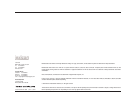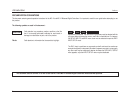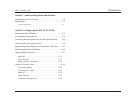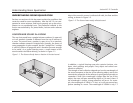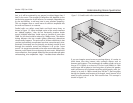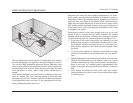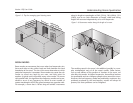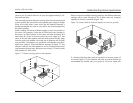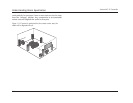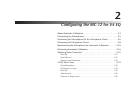
Understanding Room Equalization
1-3
Version 4 EQ User Guide
feet, so it will be scattered by any person (or object bigger than 1
foot) in the room. The strength of reflections also depends on the
transmission properties of the reflector. For example, depending on
its size and stiffness, a wall may have its own resonant frequency.
This can happen when a sound wave of sufficient amplitude hits
the wall and causes it to resonate.
Parallel walls can reflect sound back and forth many times, as
shown in Figure 1-3. When multiple copies of the same waveform
are “added together,” they do not necessarily produce louder
sound. Multiple reflections could cause an increase of more than
10dB. Yet, the level could be reduced by 10dB or more. The relative
timing between the two sounds (phase difference) determines
what actually happens. The end result of all these reflections is that
you hear an extremely complicated sum that cannot be easily char-
acterized. Fortunately our ears (actually, our brains) are able to sort
through the resultant sound and interpret it all as the “room
sound.” As we get accustomed to the room sound reflections, they
become a critical part of our enjoyment of most music. Without the
room reflections, most people would find the perceived audio quite
uninteresting, even unpleasant. Logic 7 recreates these reflections.
If you can imagine sound waves as moving objects, it is easier to
think about how they interact with common objects such as
humans and furniture. The wavelength of audible sound can be as
long as 57 ft (20Hz) or as short as 2/3 of an inch (20kHz). A 1kHz
sound wave will be about a foot long when it leaves the speaker,
and it will bounce off of almost everything solid (people, walls, fur-
niture) in its path. A 100Hz sound wave will be 11 feet long after
leaving the speaker and, because of its length, won’t bounce off of
nearly as many surfaces as the 1kHz sound wave. This concept is
shown in Figure 1-4.
Figure 1-3. Parallel walls reflect sound multiple times.





